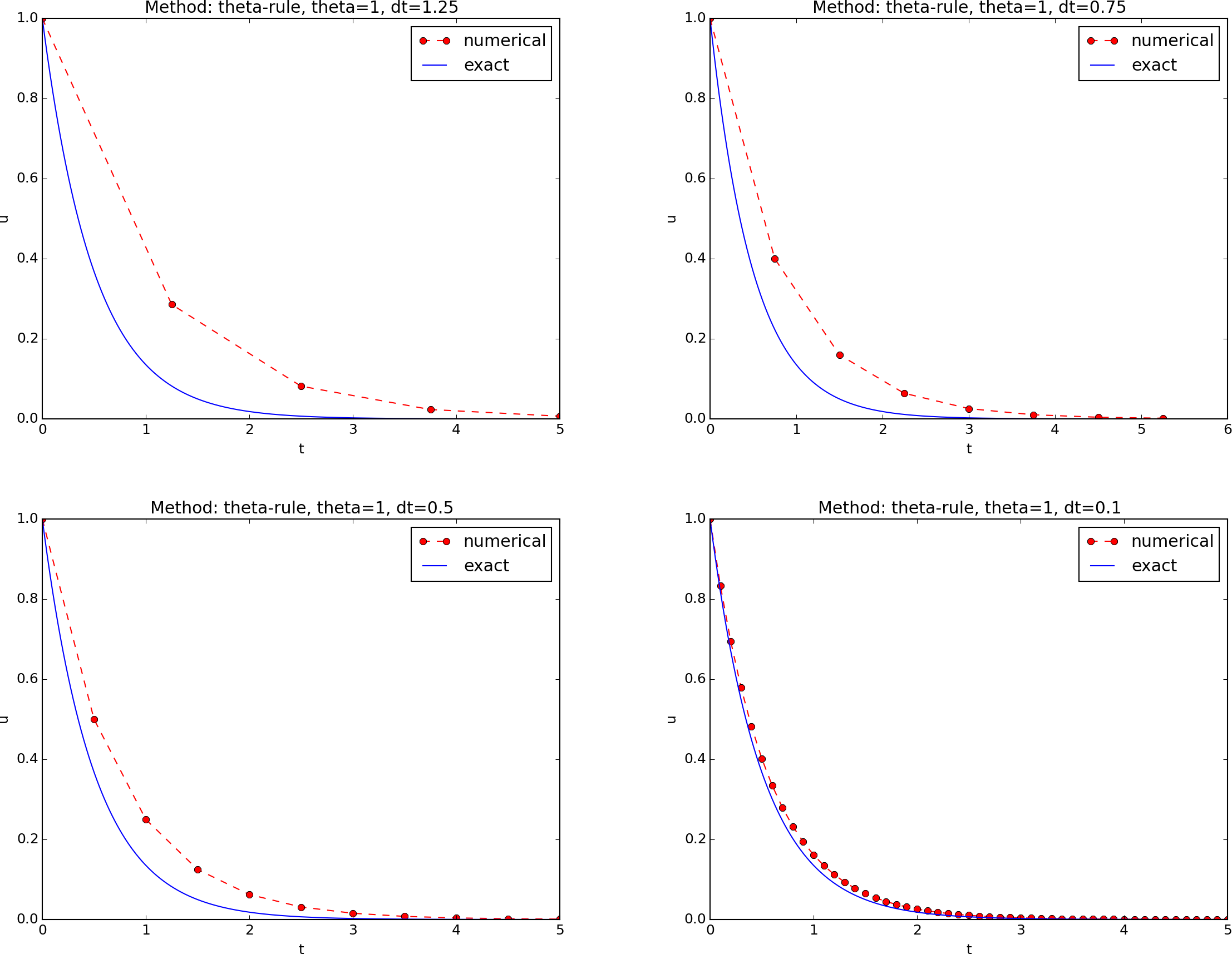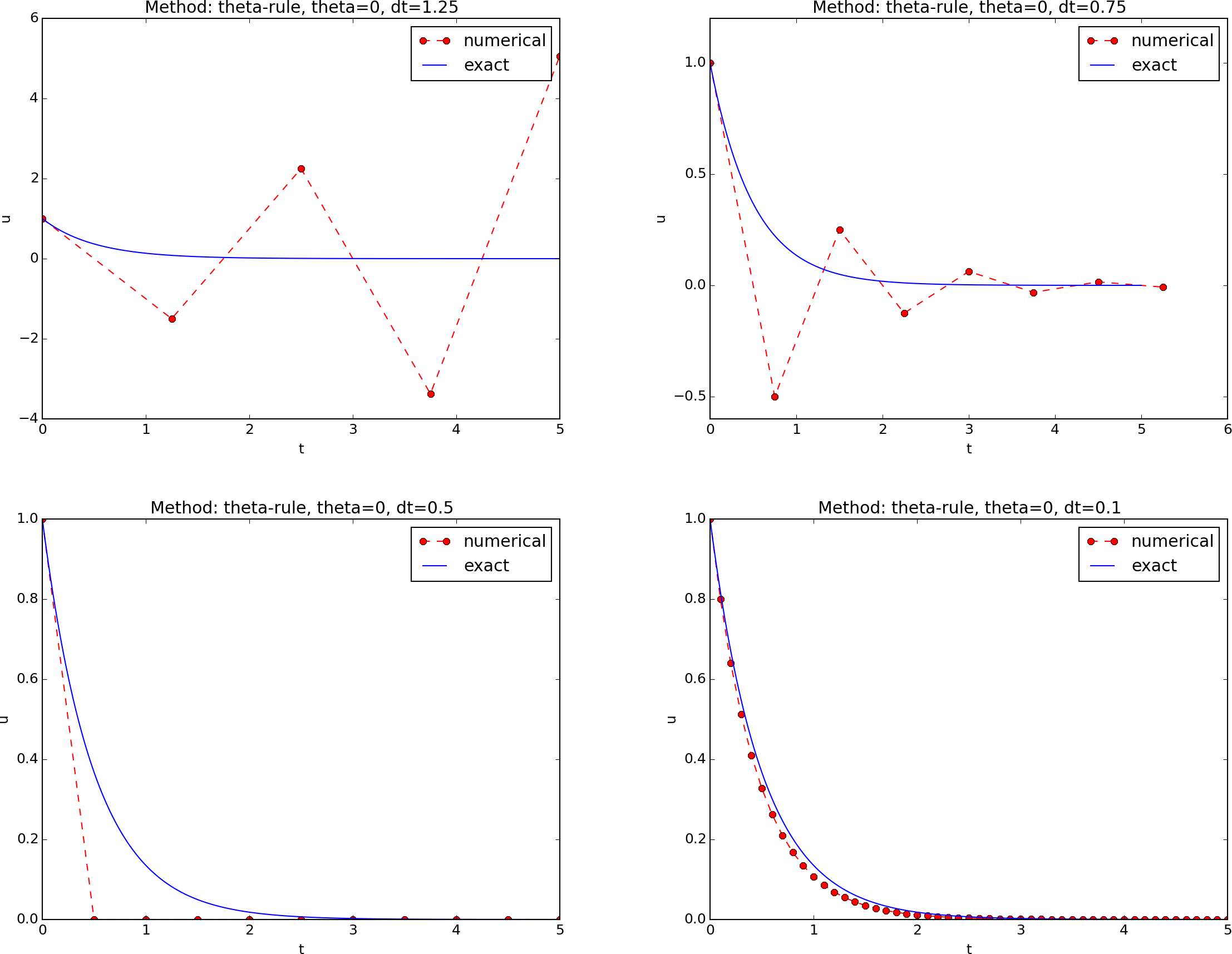Numerical investigations
Experiments with Schemes for Exponential Decay
Hans Petter Langtangen
Simula Research Laboratory
University of Oslo
August 20, 2012
Summary. This report investigates the accuracy of three
finite difference schemes for the ordinary differential equation
u'=-au with the aid of numerical experiments. Numerical
artifacts are in particular demonstrated.
Mathematical problem
We address the initial-value problem u'(t)=-au(t),
for t in (0,T], and with initial condition u(0)=I.
Here, I, a, and T are prescribed parameters,
and u(t) is the unknown function to be estimated.
This mathematical model is relevant for physical
phenomena featuring exponential decay in time,
e.g., vertical pressure variation in the atmosphere,
cooling of an object, and radioactive decay.
Numerical solution method
We use a mesh in time with equally spaced points.
The theta-rule [1]
is used to discretize the differential
equation. This scheme corresponds to
- The Forward Euler scheme when theta=0
- The Backward Euler scheme when theta=1
- The Crank-Nicolson scheme when theta=1/2
Implementation
The numerical method is implemented in a Python function
[2]:
def solver(I, a, T, dt, theta):
"""Solve u'=-a*u, u(0)=I, for t in (0,T] with steps of dt."""
Nt = int(round(T/float(dt))) # no of intervals
u = zeros(Nt+1)
t = linspace(0, T, Nt+1)
u[0] = I
for n in range(0, Nt):
u[n+1] = (1 - (1-theta)*a*dt)/(1 + theta*dt*a)*u[n]
return u, t
Numerical experiments
We define a set of numerical experiments where I, a, and
T are fixed, while the time step and theta are varied.
In particular, I=1, a=2, dt=1.25, 0.75, 0.5, 0.1.
The Backward Euler method

The Crank-Nicolson method

The Forward Euler method

Error versus time discretization
How E varies with the time step, for the three discretization
methods, is shown below.
Observe:
The data points for the three largest time steps in the
Forward Euler method are not relevant as the solution behaves
non-physically.
Summary
- For the Backward Euler scheme, we have
first-order convergence.
- For the Crank-Nicolson scheme, we have second-order convergence.
- The Backward Euler scheme is always stable and gives
qualitatively corrects results.
- The Crank-Nicolson scheme never blows up, but may give
oscillating solutions if the time step is not sufficiently small.
- The Forward Euler scheme suffers from fast-growing solution
if time time step is not small enough, but even below this
limit one can have oscillating solutions (unless
the time step is sufficiently small).
Bibliography
- A. Iserles.
A First Course in the Numerical Analysis of Differential Equations,
Cambridge University Press, 2009.
- H. P. Langtangen.
A Primer on Scientific Programming With Python,
Springer, 2012.


